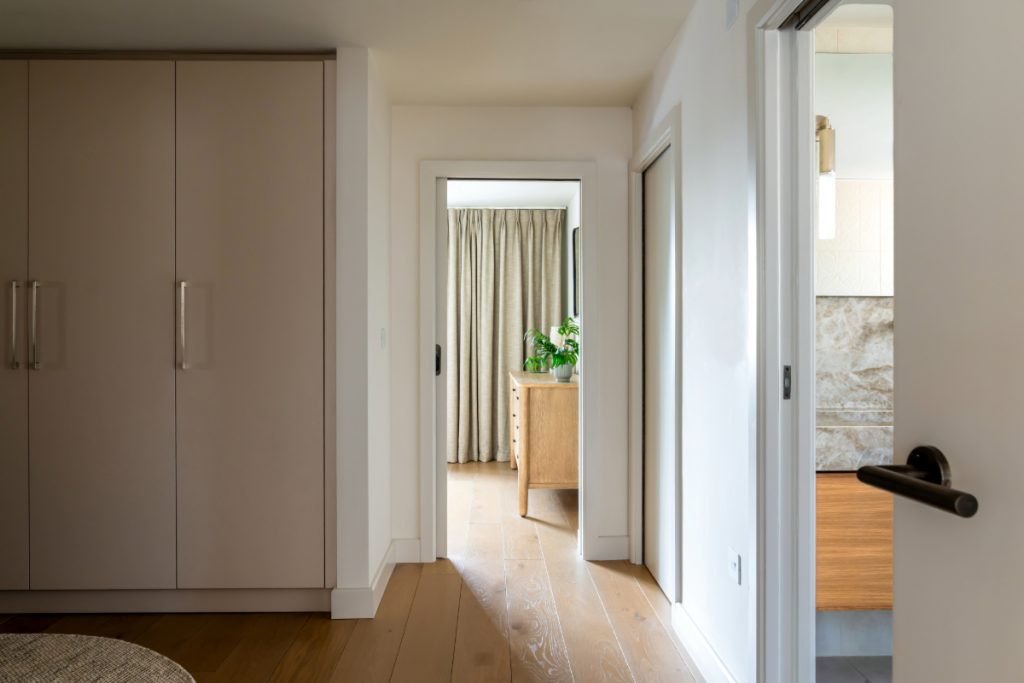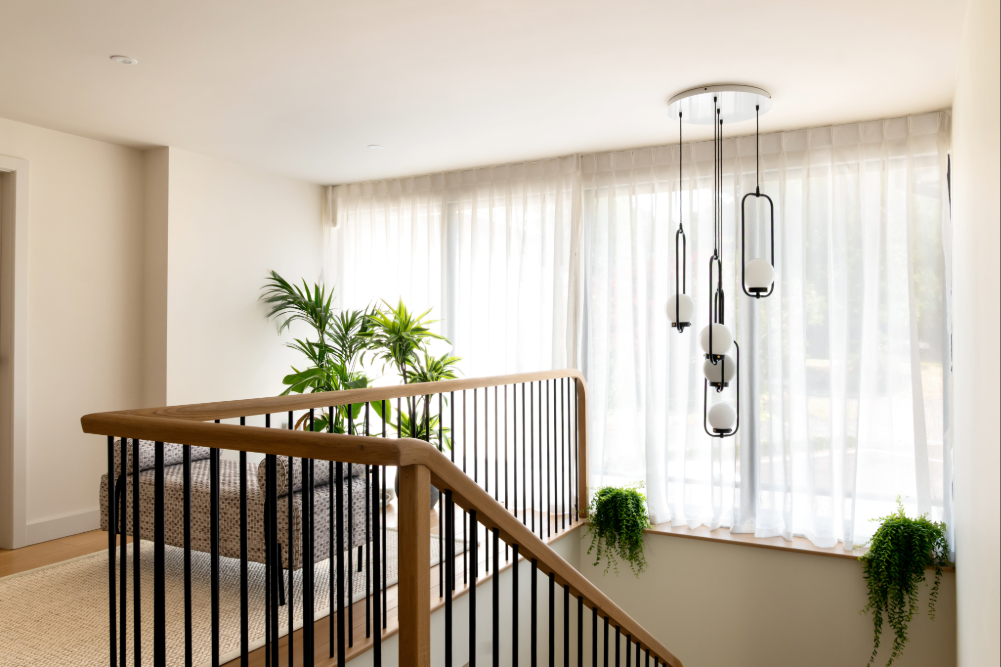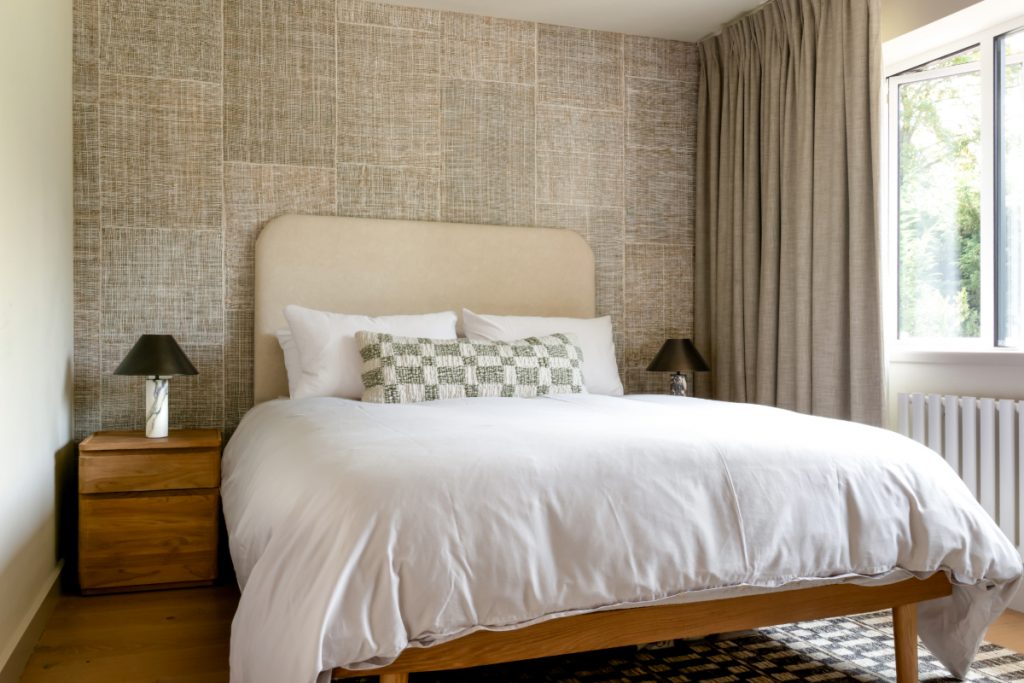Not every home is blessed with floor-to-ceiling windows or sun-drenched spaces, but that doesn’t mean they can’t feel bright, open, and uplifting.
Light has a big impact on how we feel in our surroundings. It influences our mood, feeds our energy, and helps us feel more connected to the spaces we live in.
When light moves naturally through a room, it changes the way we feel. Mornings are more energising. Unwinding in the evening is easier. Textures come to life and colours reveal their depth. There’s a sense of calm and spaciousness that makes even the most familiar corners feel refreshed.
There are plenty of ways to brighten a dark room.
With a few thoughtful design decisions, you can enhance the light you already have to make your space feel brighter, warmer, and more balanced throughout the day.
Here’s how our designers recommend doing just that.

Start with a lighter foundation
Your walls set the tone for the entire space.
Lighter colours reflect more light, making a room immediately feel more open and airy. Shades of soft white, warm beige, or pale neutral are great options, helping to enhance brightness without feeling cold or clinical.
For added warmth and depth, look for undertones that complement your natural light levels – a creamy neutral can soften cooler light, while a gentle hint of peach or grey brings sophistication to smaller spaces. Even lightening the ceiling or a single feature wall can subtly change the overall feel of the room.
Once your base palette is right, you can start to think about how surfaces interact with the light around them.
Reflect and redirect
Mirrors, metallic accents, and glossy finishes all help to reflect and diffuse brightness throughout a space.
For example, positioning mirrors opposite or adjacent to windows will help maximise daylight, whereas placing them near a lamp will double the glow in the evening.
These reflective touches create balance and movement by catching light from different angles and guiding it through the space, brightening a dark room.
When planned thoughtfully, even compact or awkwardly shaped rooms can appear larger and lighter. It’s not just about what colour you choose, but how the whole scheme works together to direct light evenly.

Let the daylight in: Natural ways to brighten a dark room
When it comes to natural light, every detail counts – including what frames your windows.
Heavy fabrics or dark colours can make a room feel smaller and block out valuable daylight. Choosing sheer or light-filtering curtains allows light to flow freely while still offering privacy.
Linen and voile are both beautiful options that soften direct sunlight and fill a room with a subtle, diffused glow. For flexibility, try layering sheer panels with lighter blinds so you can adjust the level of light throughout the day.
How you dress your windows affects the entire feeling of a room. By keeping the space around them clear and avoiding bulky furniture or clutter, you draw the eye outward, extending the sense of openness beyond the glass.
Even small changes, like choosing lighter curtain poles or mounting them higher and wider than the window frame, can help the room appear taller and brighter.
Layer your lighting
Artificial lighting plays an equally important role in creating mood and atmosphere. It isn’t just about adding brightness – it’s about adding dimension.
- Start with a central light source for overall illumination, then build layers around it.
- Wall lights add soft, ambient glow, while table and floor lamps define different zones and bring warmth into corners that might otherwise feel flat.
- Accent lighting can also highlight features like artwork, shelving, or textured walls, drawing attention to details that give your space personality.
The temperature of your bulbs also makes a difference. Warm white tones (around 2700–3000K) create a natural, welcoming quality, while cooler whites can appear stark in darker spaces.
In open-plan rooms, consider installing dimmers or smart lighting systems so you can adapt the ambience from bright and functional during the day to relaxed and intimate after dark.
A layered lighting plan turns a space from purely practical into something atmospheric – a room that works for reading, socialising, and slowing down at the end of the day.

Keep furniture and finishes light and balanced
Furniture and materials also play a huge part in how light behaves in your home. Dark, heavy pieces tend to absorb brightness, while lighter tones and softer textures help lift it.
If you’re working with a darker scheme, balance it with pale flooring, neutral upholstery, or reflective surfaces like glass and brushed metal. Light-toned woods, woven textures, and natural materials add warmth and tactility without weighing a room down.
It’s also worth considering the overall layout.
A clear line of sight through a space helps it feel more spacious and open, allowing the light to move freely. Where possible, choose furniture with slimmer silhouettes or raised legs – these subtle details create a sense of air and flow.
A mix of matte and gloss finishes let light interact in interesting ways, while metallic accents (brass handles, chrome frames) add highlights that shimmer gently as you move through the room.
This balance of softness and shine creates depth and stops lighter palettes from feeling flat and subtly helps a dark room feel brighter.
Recap: How to brighten a dark room
A brighter home isn’t just about what you see – it’s about how it feels. When light flows effortlessly through a space, it lifts your mood, improves focus, and helps you unwind more easily.
At Natalie Holden Interiors, we believe in designing homes that balance functionality with feeling.
Through carefully chosen colours, textures, and lighting, our team helps you create spaces that not only look brighter but feel more harmonious to live in.
Download our Home Renovation Guide to discover more expert tips and inspiration for transforming your home with timeless, thoughtful design.